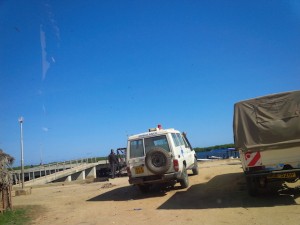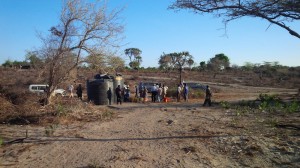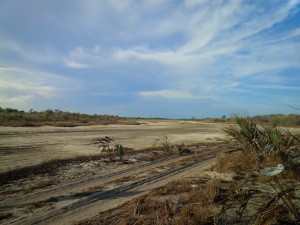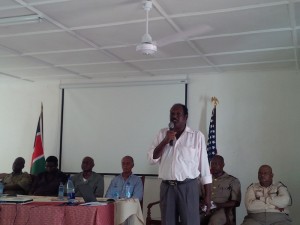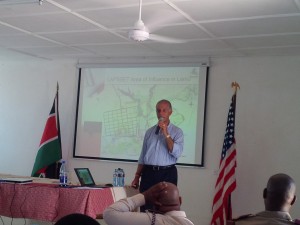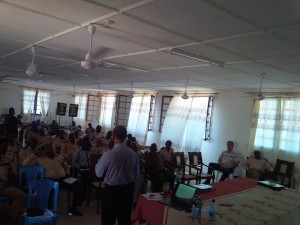AGM
The 2014 Rea Vipingo AGM took place on April 28, 2015, at Southern Sun Hotel, Westlands Nairobi. It was actually two meetings in one for the company whose shares have been suspended for over a year as different buyout offers were to be resolved by tribunals and courts.
One of the strong bidders was Centum who recently reached a settlement with other company bidders to get land, and that left the original buyout offer by the majority owners – R.E.A Trading with 57% to be the only offer presented to shareholders.
The meeting was somewhat acrimonious. Shareholders wanted to know about their dividend and their possible exclusion from the company as the Rea Trading had indicated right from their initial bid that they intended to buy out the minority shareholders and delist the company from the Nairobi Securities Exchange.
In the early part of the meeting the shareholders present, numbering about 300, did not want to even approve the financial accounts. They wanted to discuss their lack of dividend and their being cut off from the company, and the board not entertaining better offers. At one point the board Chairman threatened to resort to a poll vote in order to get through the business of the day including approval of accounts, the election of directors and auditors.
He said there was no legal way to alter the discussion at the meeting to and declare a dividend – and that discussions on the buyout offer should wait till the EGM meeting. He also said when a takeover is on, directors can’t declare or pay dividends – and that If the offer goes through, the directors will consider a substantial interim dividend to those who remain as shareholders, when the offer closed. He said that when the meeting agenda was prepared and circulated, a settlement had not been reached with Centum (who had since withdrawn their bid).
One shareholder said the company’s retained earnings are being used to buy off shareholders, but the Chairman said the accounts are factual documents for discussion and did not represent policy decisions. Some shareholders accused him of being dictatorial, but once the poll issue was raised, the meeting settled down and was quickly done.
Two directors were re-elected, and the board remuneration was also approved. That it included a slight increase from Kshs 65,000 to 70,000 per month for all directors, (and 75,000 to 80,000 for the chairman) was not disputed, shows that the minority were now defeated.
EGM
The Extraordinary General Meeting took place five minutes after the AGM ended at which the shareholders approved:
1. Sale of Vipingo Estates to Centum.
2. Sale of land owned by the company at Vipingo to Vipingo Development.
The Chairman said the motions had been cleared following proposed settlement, with, and sale of company land to, Centum. Investment. He said he was not an employee, but also a minority shareholder who had bought the shares at Kshs 10.50 in 1995, and that he had accepted the buyout (at Kshs 70 plus the top up), which was a good deal. He also said before the various offers for the company, from Rea Treading at 40, Bid, and Centum, the market (other NSE investors) had valued the company at Kshs 27 (the share price of the company) – and that Kestrel had found that Kshs 40 was a good price that the board had been ready to recommend at the time.
Other findings
• Kenya’s new capital gains tax (GCT) has caught up with the deal. In answering a question on if CGT would apply to the payout to shareholders, the Chairman said it was possible, but that CGT had been unsatisfactorily introduced and may be clarified in the upcoming budget speech, and probably before the deals and payment are done.
• The Chairman said that one hazard of investing in the country is there are delays which led to CGT. But it also led to the competitive nature of offers that had seen offers to shareholders go from Kshs 40 to Kshs 70.
•On the land, he said Rea had conditionally offered to sell the land to Centum if they get all approvals (from the Competition Authority, and land control boards) and Centum brings the money. The offer was a good price from Centum that will, crucially, allow Vipingo’s sisal production for export business to continue for many more years as Centum will take over small pieces of land over a period of time. The sale price is slightly less than the Kshs 2.1 billion (~$23 million), value, but they still have their machinery, operations, and can harvest sisal for export for many years
• One shareholder was upset by the patterns of major shareholders such as at General Motors, Elliotts Bread, Access Kenya and CMC who when they meet their targets, chase away minority investors, and wondered why the CMA allowed this. The Chairman said Vipingo was going to invest in new (expensive) sectors like energy generation, and the majority shareholders wanted to give minority ones a chance to exit.
• The prospectus offer shows Rea Trading have placed $6.2 million with CBA who would fund the balance of the takeover via a $15 million term loan. Rea have put $4.4 million for the cash top-up. If they get 75% they will move to take over the rest of the shares, and if they get over 90% they will delist the shares.

